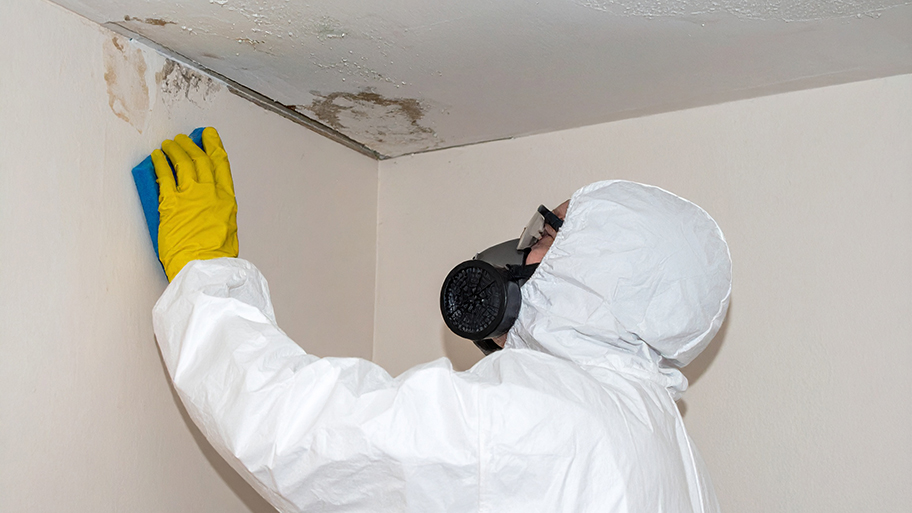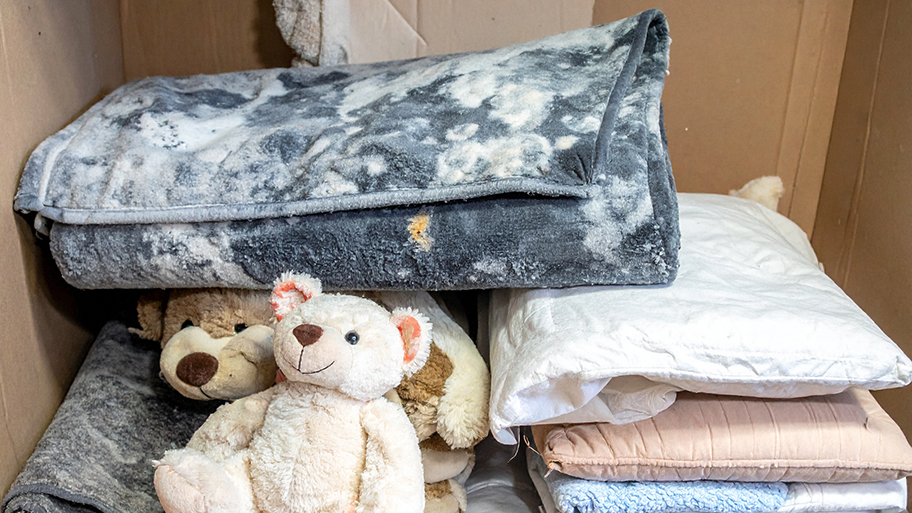
Mold remediation cost can quickly escalate. But if you have mold in your home, the cost for mold remediation is worth it.
Protect the integrity of wood surfaces


Mold growing on wooden surfaces not only ruins the appearance but also presents health hazards. It's essential to take prompt action to address mold on wood to maintain a healthy environment and protect the integrity of the material. Read on to learn how to kill mold on wood to eliminate visible mold and prevent its recurrence.
Mold is a type of fungus that is found all over the world. It's nearly always present, even if you can't see it. Most molds grow on food sources such as carpeting, cardboard, paper, wood, drywall, or decaying plants.
Mold thrives in moist areas, whether on a patch of fallen, decaying leaves on a forest floor or on a damp wooden beam inside a home. While mold growth is normal in a natural setting and can even be beneficial outdoors, it’s a cause for concern when it grows indoors.
If mold starts growing on a fallen tree in a forest, it's not a cause for concern. Mold growth is part of the cycle of life, and eventually, it will help the tree breakdown. But if mold starts growing on wood that's part of your home or furniture, it's a problem.
Left untreated, the mold will eventually weaken the wood, leading to significant damage and destruction. Unchecked mold growth on wood in your home can also cause health concerns, such as asthma, allergies, and other respiratory problems.
When performing any project that deals with the presence of mold, proper protective gear is essential, so ensure that you are wearing safety glasses, gloves, and a face mask before starting any work. Before you begin the steps, you need to isolate the area to prevent mold spores from spreading to other parts of your home. Lay out plastic sheets or tarps on the floor and on top of furniture to prevent mold debris from getting onto other surfaces.
Another important safety measure for killing mold is to ensure adequate ventilation in the area to reduce the concentration of mold spores in the air. The best method is to open windows in the area to provide fresh air.
Mold remediation that requires the removal of drywall can be difficult to contain. Any sort of demolition can cause spores to travel into your home’s HVAC system leading to potentially more harmful infestations. A mold removal pro will have the right tools and skills to contain it.
Using a soft-bristled brush, gently remove any loose dust and dirt from the surface of the wood. This provides better access to the mold area for the best removal results. Vacuum the area afterward to clean fallen debris.

First, clean the area with a mild dish soap and water using a sponge and gentle pressure. In a spray bottle, mix equal parts of white vinegar and water. Apply the natural mold killer solution to the moldy wood surface. Let it sit on the area for roughly 10 to15 minutes to loosen the mold.
Now that you’ve gotten the prep work out of the way, you can roll up your sleeves and get to work. Here’s what to do.
Using a sponge, scrub the moldy area using moderate pressure. If the mold isn't lifting well, consider preparing a natural scrub to move the process along. Mix baking soda with water to create a paste and scrub gently with the sponge.
Using clean water and a separate sponge, wipe away the cleaning solution and rinse the wood surface.
Mold thrives in damp conditions, so ensure the wood has dried completely. If the area isn't drying well on its own, consider using a dehumidifier in the room. After the area has dried, reinspect it to ensure the mold has been removed and, if not, repeat the process to rid the area entirely.

To prevent mold growth, investigate what caused mold in the first place. Leaks, moisture, or other ventilation issues may be responsible. Determine the cause and take steps to remedy the solution to deter mold growth.
According to data from Angi customers, a majority of people (53.2%) request mold removal because they can actually see or smell mold in their home. Another 19% experience cold, allergy, or asthma symptoms they believe are related to mold in their homes. Call a pro for mold testing and removal ASAP if you notice any possible signs of mold in your home.
Killing mold on wood surfaces is a generally easy task for even the novice DIYer to complete. However, if the mold infestation persists, covers a large surface area, or the root cause of the mold growth is unknown, it's advisable to hire a mold remediation professional.
A professional will be able to accurately address the issue and recommend actionable solutions. Mold remediation cost ranges between $1,125 to $3,345, but will largely depend on the severity of your mold issue.
From average costs to expert advice, get all the answers you need to get your job done.

Mold remediation cost can quickly escalate. But if you have mold in your home, the cost for mold remediation is worth it.

The cost of a mold inspection might seem high, but it’s one of the best investments you can make for your health and home. Read on to learn cost-saving tips.

Mold can enter your air ducts and lead to poor indoor air quality. Use this guide to learn how to get rid of mold in air ducts for healthier air.

If you found mold on window sills in your home, keep reading to learn how to remove the mold and avoid it from forming in the future.

Mold growth in your home poses a serious risk to your belongings and health. But after mold removal, knowing which items to pitch and which you can keep can be confusing. This guide will help you sort everything out so you know what to save.

Figuring out how to test for mold in your home is important. Mold testing can offer peace of mind and lets you know if it’s time to call a pro. Learn about mold testing processes in this guide.